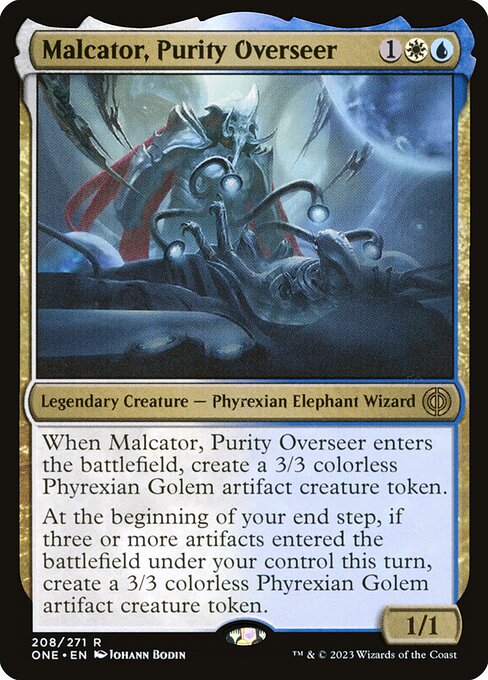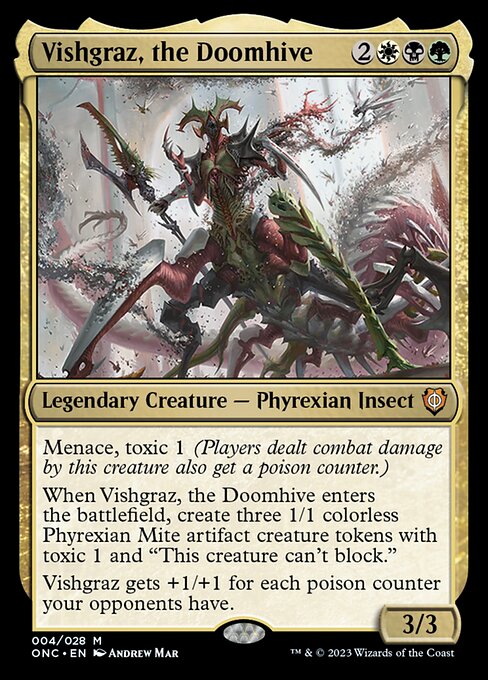Deck & Commander Strategies

Malcator, Purity Overseer
The Malcator deck focuses on creating a board full of Golem tokens and utilizing artifact synergies to dominate the game.

Vishgraz, the Doomhive
The Vishgraz deck leverages its commander's toxic ability and proliferate mechanics to apply constant pressure on opponents.
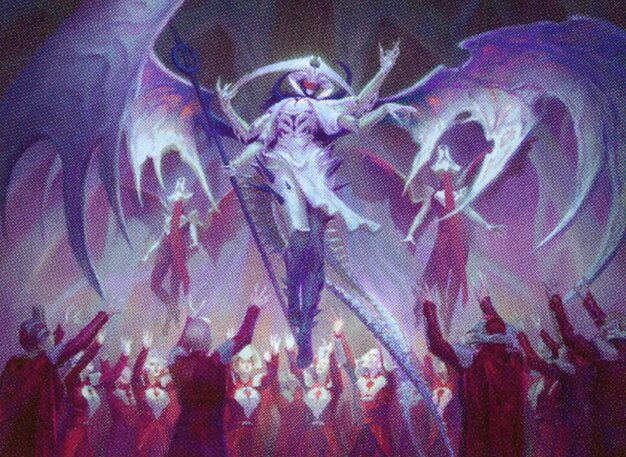
Atraxa, Grand Unifier
The Atraxa deck is designed to generate value over time, using proliferate to enhance its own board state while controlling opponents' boards through removal spells.
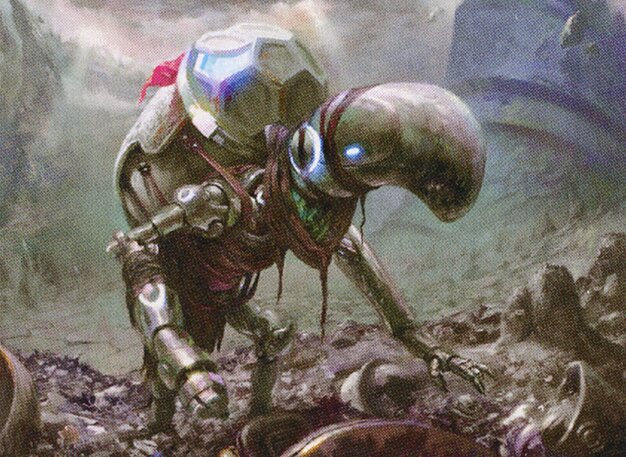
Urtet, Remnant of Memnarch
The Urtet deck aims to create an infinite mana combo with Mirror Galvanizer and use this to power up its own board state.
Gameplay Insights
- 1
The Malcator player's use of Teleportation Circle to flicker Blade Splicer for additional Golem tokens was a key play that helped establish a strong board presence.
- 2
The Atraxa player effectively disrupted the Urtet player's potential infinite combo by removing a key piece (Mirror Galvanizer) with Toxic Deluge.
- 3
The Smothering Tithe played by the Malcator player provided a significant advantage by ramping up their mana resources.
Notable Cards
-
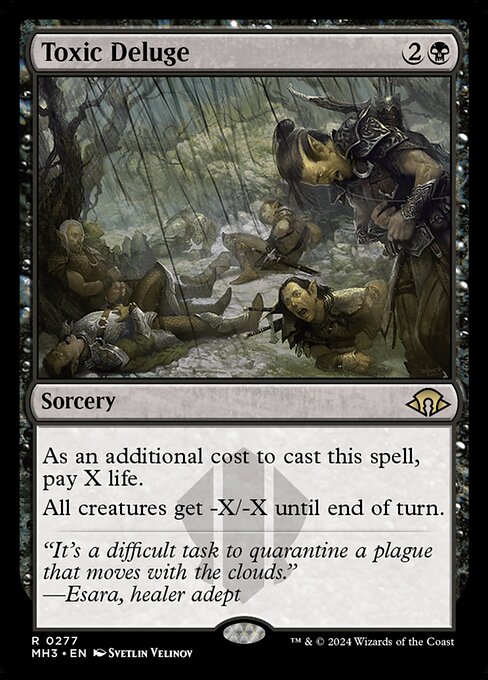
Toxic Deluge
-
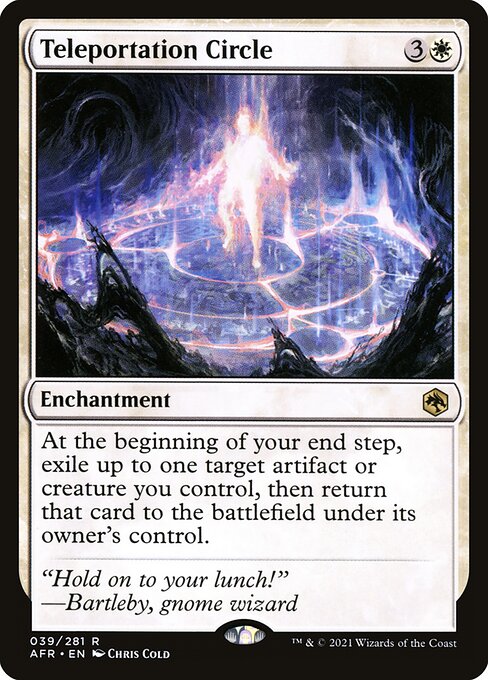
Teleportation Circle
-
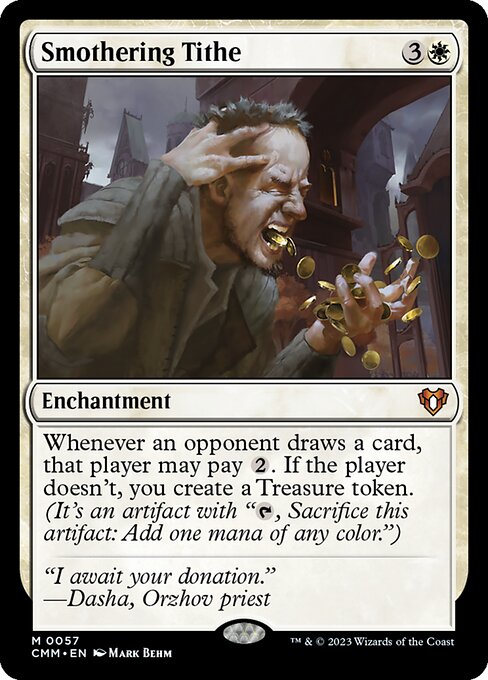
Smothering Tithe
-
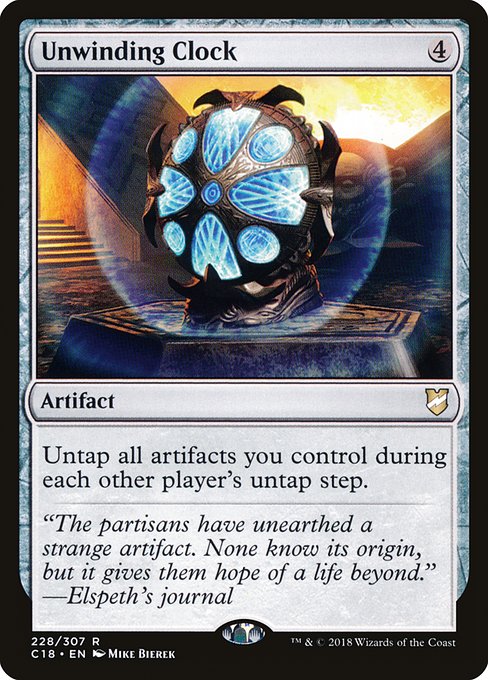
Unwinding Clock
Gameplay Summary
The game featured four commanders each with a unique strategy.
The players used their decks to the fullest, with Malcator, Purity Overseer player creating a formidable board presence through the creation of multiple Golem tokens.
The player piloting Urtet, Remnant of Memnarch managed to set up a potential infinite mana combo with his Mirror Galvanizer, but was thwarted by Atraxa, Grand Unifier player using a Toxic Deluge.
Vishgraz, the Doomhive player used his commander's toxic ability to apply pressure on the opponents.


